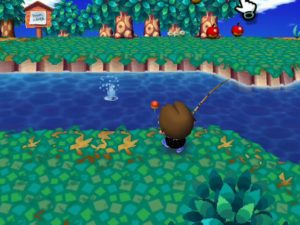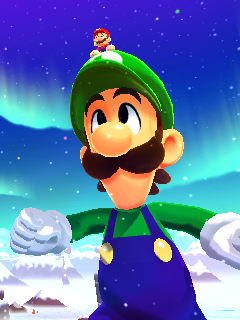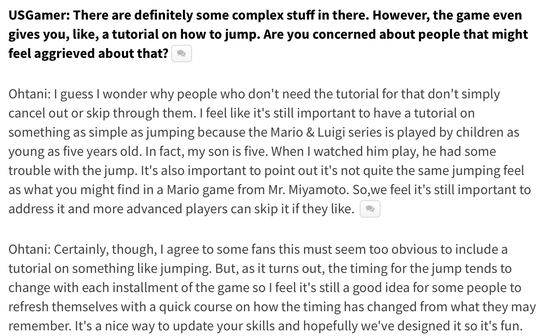Balloon Kid Video Analysis Series and Writing Updates
October 13th, 2018
Don’t let the seemingly deserted nature of the blog fool you. I’ve been busily working away behind the scenes and can thankfully share some updates and new material.
Firstly, I recently completed the manuscripts for my forthcoming two books, Adventures in Games Analysis Vol. I and Speed Boost: The Hidden Secrets Behind Arcade Racing Design. Both titles have been sent away for editing and I’m hoping to be able to release the pair in early 2019. More details will arrive in due course.
Secondly, I’ve contributed to a few podcasts and video projects over the past few months as part of VG Commune (a sort of video game book club). The first item of which is a podcast on cult classic Killer 7. In the podcast, thinker / game developer Adrian Santiago and I discuss the worst parts of Killer 7, such as the janky enemies, shallow bosses, and trivial puzzles. Killer 7 is an interesting distillation of Resident Evil with amazing aesthetic qualities. However, the issues in the game design are immense, to say the least. Our discussion counterbalances an earlier podcast on the positive aspects of Killer 7.
Adrian also invited me to talk about The Cave of Atman with various members of Design Orientated, another games analysis community which I am involved in. The discussion starts off a bit slow as we slowly tease out some pretty fundamental ideas within puzzle game design (e.g. complexity vs. depth).a
Lastly, I partook in a series of audio recordings on Game Boy platformer Balloon Kid, which were subsequently edited to fit a video form. Greg Livingston, who headed up this project, has done an excellent job in distilling the conversation and presenting the comments in an easy-to-understand manner. If you haven’t played it, Balloon Kid captures the best aspects of early Game Boy game design, simple concepts done well and fit to the limitations of the hardware.
Otherwise, Adrian, Greg, and I are currently recording a series of podcasts on The Legend of Zelda: Skyward Sword. This title, with its boundary-pushing game design, has made great fodder for discussion. I look forward to sharing more about this title in the future.
Animal Crossing – The Hooks of a Social Simulation
May 30th, 2018
The Animal Crossing games have a unique talent of engaging player interest over a sustained period of time. However, the titles don’t rely on the traditional challenge-skill-reward loop of most video games. Rather, the genius of Animal Crossing is in how it uses systems of the everyday to draw the player into its social simulation.
Time Cycle
Animal Crossing‘s game world reveals itself over time as the internal clock (in conjunction with other measures and timers) triggers a host of behaviours and scenarios. These include, but are not limited to:
-
Weather patterns;
-
The presence of flowers, fruit, fish, insects, and fossils;
-
The coming and going of your neighbours;
-
Festivals;
-
The dialogue of individual characters;
-
The availability of products;
-
Access to the general store.
The player’s response (or lack of response) to each time window ripples forward through the game world. Chat with your neighbours regularly and they’ll be more inclined to remain in the village. Forget to check in on your town for a month and it’ll become infested with weeds. The time cycle encourages the player to play a little each day over an extended duration of time to maintain the smooth running of the village.
Game World
Animal Crossing is set within the confines of your reasonably small village. The size of the game world, in combination with its Truman Show-esque clockwork of daily activity, emphasises the small, evolving details (what *insert favourite animal friend* is going to say today, the new item on sale at Tom Nook’s store, the growing of a sapling into a tree, etc).
The Hooks
The time cycle and compact size of the township facilitate the social sim’s first hook—the characters. By virtue of the player moving around the confined space of the village and the characters going about their daily routines, the player is likely to stumble upon the animal characters and, in good odds, talk to them. Your neighbours are, after all, the most dynamic and interactive game element in town. Even if players choose to ignore the population of zoo creatures, their furry friends will occasionally run over to ask a question or dispel of some random thought bubble or throwaway piece of furniture. Tom Nook’s initial errands also set a precedence by sending the player out to interact with potential customers and chase debts. Needless to say, your animal friends are pretty hard to avoid.
It’s through the process of regularly seeing and interacting with your neighbours that you come to form an affection for them, not unlike real life. This affection is helped along in great part by the incredible localisation which makes each personality larger than life. The animals will call you a friend, give you nicknames, spout out their own personalised catch phrases, and share their obscure and funny musings on the world around them. They’re engineered to be loved.
The second hook can be explained much more simply: customisation. The Animal Crossing games present the player with a wealth of customisation options. The player can modify the avatar’s name, hair style, clothes, house, furniture, wallpaper, flooring, and the name of the village. Once the foundation is laid, new opportunities for creative ownership arise in the form of the animal characters asking the player for opinions, catch phrases, and secret best friend codes. The power of customisation is that it gives the player a sense of ownership over the game world because it asks that they invest some of their creative energy into shaping the fictional environment.
The phenomenon described above is similar in nature to the third hook: player agency. As mentioned previously, many of the player actions ripple forward through time and your town thereby becomes a collective representation of your individual experiences. The more you play and the more of yourself you invest into the game world, the more of that investment is reflected back at you through gameplay.
Conclusion
Animal Crossing‘s real-world time cycle encourages the player to play the game regularly over an extended period of time. The small size of each village makes it difficult to avoid the population of animal characters going about their daily routines. It’s the frequent interactions with these characters as well as the many opportunities to customise and affect the game world which allow the player to be drawn into Animal Crossing‘s social simulation.
Mario and Luigi: Dream Team Bros. – Remaining Thoughts
May 7th, 2018
To close this series of posts on Mario and Luigi: Dream Team Bros., I’ve compiled a few smaller thoughts into this one article. For more on Mario and Luigi: Dream Team Bros., look forward to the (eventual) first issue of Adventures in Games Analysis where I explore how AlphaDream leveraged the 3DS hardware to evolve the Mario and Luigi battle system.
Wiggle Room in Combat Feedback
Depending on how well the player performs an attack, the words “Excellent”, “Great”, “Okay”, or “Miss” will appear on screen as a form of feedback. All “Excellent” Bros attacks net the same amount of damage no matter if the player executes the sequence quickly, slowly, with perfect accuracy, or perhaps with a minor mistake. Given the wiggle room within each bracket, it would have been nice if the damage count more accurately reflected the player’s performance. For example, I always challenge myself to complete Bomb Derby as quickly as possible, yet there’s no difference between a successful slow run and a successful fast run, although the former demands more skill. Tweaking the damage count as suggested would add a barely noticeable layer of complexity to the combat and increase the skill ceiling for more savvy players like myself.
Expert Challenges
Expert challenges are player goals built into the combat system. These optional objectives increase the skill ceiling of the game and provide a means for keeping advanced players more engaged, if indeed they choose to pursue such objectives. On completing each challenge, the player is rewarded with points which lead to special equipment once set tallies are reached.
It’s a fabulous system marred somewhat by an uninspired set of objectives. Of the 111 challenges, 61 involve the player finishing a battle with a particular enemy without getting hit, 34 involve performing excellent attacks either with a particular mechanic or for 10 times in a particular location, and 16 involve dodging 10 enemies in a row in a particular location (full list here).
The objectives blur together under the mantra of “play good”, when perhaps they could have been used to encourage the player to explore more of the design space. Think the Hooraw Beef-off battles where the player is challenged to defeat four bosses under special conditions, but extended to cover the main game. A flashing prompt on the touch screen could inform the player of when such challenges become available. With a quick tap, they could then enter into these alternative battles. Personally, I would find this tailored form of branching difficulty much more attractive than an extra difficulty select where enemy values are arbitrarily increased.
Gyro Prompt
In the pre-attack screen preceding Bros and Luiginary Attacks, the 3DS’s gyro sets the position by which all later gyro movements will be anchored around (much in same way the analog stick is calibrated). The calibration becomes apparent the first time you start one of these attacks while holding your 3DS at an awkward angle, which you must then pivot around for the subsequent sequence. Thus, the pre-attack screen also acts a reminder to hold your 3DS in a neutral position.
Tutorials
Many of the Dream Team Bros. reviews complained about the game’s supposed heavy handed tutorials. Let’s put the number of tutorials into perspective for a moment. The introduction sequence before the Bros. arrive at Mushrise Park features a lot of needless chatter that doesn’t function very well as tutorial or story (the quiz and jumping mini-game come to mind). Afterwards, there’s a few important tutorials on the core mechanics, and then you’re left to your own devices until you acquire the next new ability. With each new mechanic added to the Bros.’s ability set, Starlow spends 1-2 minutes introducing the new move. So across the forty-hour adventure, the player probably has less than an hour of tutorial time, most of which they can skip if they choose. The anti-tutorial sentiment simply doesn’t stand up to basic scrutiny.
Producer Akira Ohtani’s response (responses?) to this interview question bemoaning tutorials in Dream Team Bros. explains the situation well. AlphaDream, as with most developers, want their work to reach as wide an audience as possible and tutorials enable them to cater to players of a variety of ages and skill levels.






 Game Design Companion: A Critical Analysis of Wario Land 4 - $7.99
Game Design Companion: A Critical Analysis of Wario Land 4 - $7.99 Level Design: Processes and Experiences
Level Design: Processes and Experiences Speed Boost: The Hidden Secrets Behind Arcade Racing Design - $5.99
Speed Boost: The Hidden Secrets Behind Arcade Racing Design - $5.99 Adventures in Games Analysis: Volume I - $5.99
Adventures in Games Analysis: Volume I - $5.99







